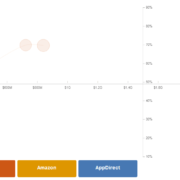Ericsson’s turnaround is in process, but sustainability of business is in question
TBR perspective
Though Ericsson’s focused strategy has proved to be a viable approach to stabilize the company, return it to profitability and provide incremental organic growth, the key concern will be how sustainable that stability and growth will be over the long term.
Ericsson’s focus on the wireless access domain tethers the company to the whims of that market, which is undergoing significant disruption as 5G and virtualization take hold and as operators increasingly shift capex budgets from connectivity infrastructure to building digital businesses, limiting Ericsson’s growth potential. Though there is room for Ericsson to take market share, particularly from Nokia (NYSE: NOK), Huawei and ZTE by leveraging its software-upgradable Ericsson Radio System (ERS) RAN gear, Ericsson is not immune to adverse business trends impacting the broader RAN market, namely legacy decommissioning, virtualization, openness, cloud and white box.
Ericsson is betting its ERS will offset the impact of these adverse trends and hasten its shift to a more software-centric entity with a more recurring, license-based software model that carries relatively high, sustainable margins, but this shift will take years to unfold and there is significant legacy business at risk of disappearing in the interim.
With the architecture of the network fundamentally changing to be virtualized and cloudified and communication service providers (CSPs) focused on relentless cost efficiency and TCO reduction, Ericsson will have to carefully balance its shift from the old world to the new reality, whereby forklift RAN upgrades become lower scale and targeted, and innovation and value migrate to the software layer. This has significant implications for Ericsson’s hardware and close-to-the-box services businesses, both of which are optimized to operate at high scale for efficiency and profitability.
TBR notes Ericsson and its close rival Nokia are pursing different paths during the 5G era. While Ericsson focuses on its core business of selling RAN and mobile core directly to service providers, Nokia is taking an end-to-end infrastructure approach and is building out a dedicated business unit with a full suite of resources to directly sell to enterprises. Though Industry 4.0, 5G and digital transformation are underlying themes that find commonality between the two vendors, their divergent tracks are noteworthy.
Ericsson (Nasdaq: ERIC) hosted its annual Industry Analyst Forum in Boston, bringing along a range of executives to provide an update on the company’s corporate and business unit strategies, with a focus on Networks, Managed Services and North America. Key topic areas included 5G, Internet of Things (IoT), automation and artificial intelligence (AI). Following the main session, analysts could attend three tracks — Network Evolution to 5G, AI and Automated Operations, or 5G and IoT Industry Innovation — and then participate in one-on-one speed meetings. The tone of Ericsson’s 2018 analyst day was upbeat as the company sees early signs that its turnaround plan is yielding results, evidenced by its 3Q18 earnings results in which organic revenue growth returned and margins improved markedly. Ericsson remains committed to its transformational restructuring and focused strategy, which are key pillars of its turnaround plan.


Leave a Reply
Want to join the discussion?Feel free to contribute!